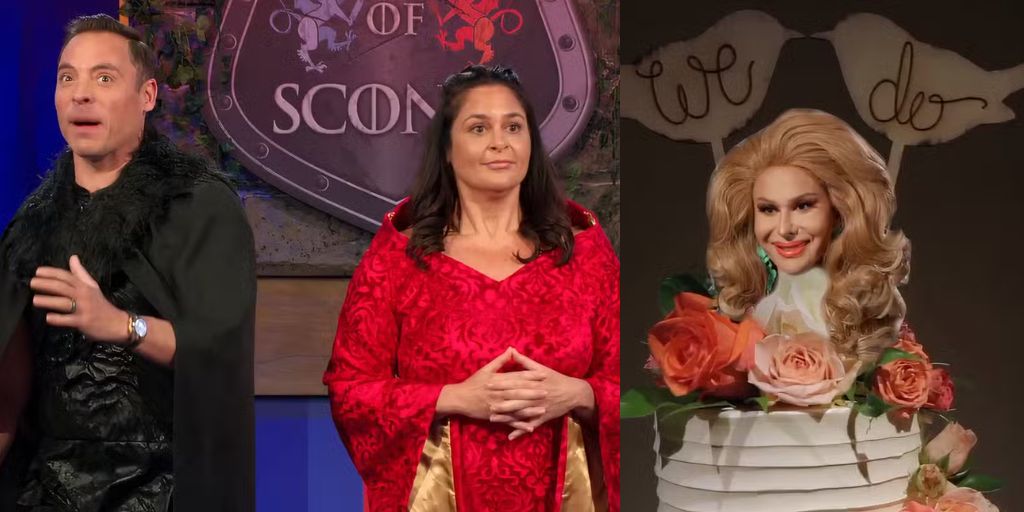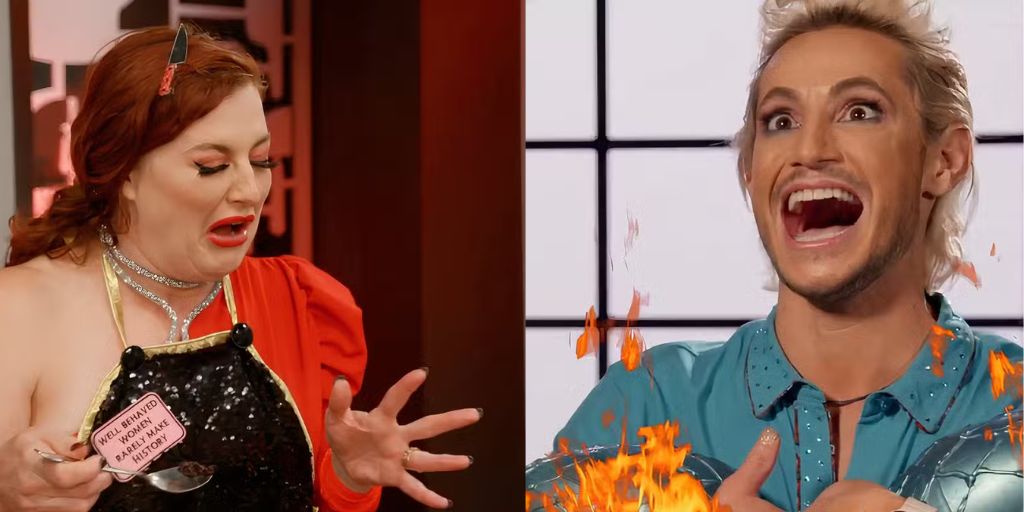The 28th season of Worst Cooks in America on Food Network features a cast full of well-known reality television personalities, including fan-favorite heroes and villains. The show has always been about teaching some of the worst cooks in the country how to improve their skills, and this season adds a unique twist.
Instead of everyday people, the contestants are reality stars who step out of their comfort zones to learn how to cook while raising money for charity. This concept sounds exciting, but the season feels far from authentic. The exaggerated reactions, excessive editing, and over-the-top performances make it hard to take the show seriously.
Since its debut in 2010, Worst Cooks in America has been a fun and lighthearted series. With Anne Burrell as the lead mentor, the show has entertained viewers for years by showcasing participants with little to no cooking ability.
Watching contestants struggle to make basic dishes and then improve under the guidance of professional chefs is both amusing and inspiring. However, Season 28 moves away from that original charm. Instead of focusing on real cooking struggles, the show leans too much into forced humor and dramatic moments.
Forced Acting Makes Cooking Struggles Less Believable
One of the biggest issues with Season 28 is the way contestants exaggerate their bad cooking skills. While the show has always featured people who struggle in the kitchen, this season feels scripted. Many reality stars seem to be acting rather than genuinely learning. Their reactions feel staged, and the performances take away from the authenticity that made earlier seasons enjoyable.
For example, Frankie Grande, best known from Big Brother, overacts his lack of cooking skills. He constantly adds dramatic flair to every mistake and forces jokes into nearly every situation. His attempts at humor often feel unnatural, making it clear that he is more focused on entertaining than improving his cooking.
Another contestant, Rachel Reilly, is famous for her bold personality on Big Brother and The Amazing Race. However, on Worst Cooks in America, she seems to be playing a character rather than being herself. Her reactions to cooking disasters are overly dramatic, and she often makes exaggerated facial expressions and gestures.
One example is when she attempted to make turkey and chocolate Brussels sprout lasagna—a dish that was clearly meant to be outrageous rather than a serious effort. Instead of highlighting her journey as a cook, her over-the-top reactions make it difficult to connect with her experience.
In previous seasons, contestants had real struggles and genuine learning experiences. While they made mistakes, their reactions felt natural, and their progress was satisfying to watch. This season, the focus on exaggerated performances takes away from that aspect, making the show feel more like a scripted comedy than a real cooking competition.
Chaotic Editing Distracts from Cooking
The editing in Worst Cooks in America Season 28 is another major issue. The show has always included humorous edits to enhance the entertainment value, but this season goes overboard. The frequent use of cutaways, added graphics, and unusual effects takes attention away from the cooking process.
For example, the show repeatedly uses gothic text and metal music whenever Sebastian Bach, the lead singer of Skid Row, appears on screen. While this might be funny at first, it becomes repetitive and unnecessary. Instead of focusing on his cooking progress, the show emphasizes these edits, making it feel more like a comedy sketch than a cooking competition.
Another editing choice that feels excessive is the frequent use of green screen effects. In some moments, the contestants’ heads are placed onto different objects, making the show look like a chaotic internet meme rather than a Food Network production. These distractions pull viewers away from the actual cooking challenges.
One of the most extreme examples of this chaotic editing is in episode six, where the show repeatedly flashes a clip-art-style dragon on the screen. The purpose of this effect is unclear, and it only serves to make the episode feel more random and scattered. Instead of allowing viewers to focus on the contestants’ cooking, the editing makes it difficult to take the competition seriously.
While Worst Cooks in America has always included humor, this season relies too much on visual effects and quick cuts, making it feel overwhelming. The show works best when it focuses on real kitchen struggles and genuine improvement, but the excessive edits take away from that.
Some Contestants and Moments Still Shine
Despite the season’s flaws, there are still some enjoyable moments. Sebastian Bach, for example, stands out as a contestant who seems to be having fun in an authentic way. While the excessive graphics surrounding him are unnecessary, his enthusiasm is genuine.
He brings a sense of joy to the competition, making his presence one of the season’s highlights. Unfortunately, he did not make it to the final episodes, but his time on the show was entertaining.
Another bright spot is the friendship between Wes Bergmann and Bartise Bowden. The two reality stars form an unlikely but amusing bond throughout the competition.
Their interactions feel natural, and their friendly rivalry adds a fun dynamic to the show. Unlike some of the other contestants who focus on exaggerated performances, Wes and Bartise seem to be genuinely enjoying the experience.

The professional chefs, Jeff Mauro and Antonia Lofaso, also bring energy to the season. They appear to be having fun with the contestants, and their teaching moments are still engaging. Their mentorship is one of the strongest aspects of the show, and they help keep some of the focus on actual cooking.
Season 28 Tries Too Hard to Be Funny
The biggest issue with Worst Cooks in America Season 28 is that it tries too hard. Instead of allowing humor to come naturally from the contestants’ real struggles, the show forces exaggerated acting and chaotic editing. Earlier seasons had a balance between comedy and cooking, making it fun to watch people improve. This season, however, loses that balance.
Reality stars are entertaining, but their performances feel too staged. Many of them act like they are on a scripted show rather than a cooking competition. The excessive edits, including strange animations and unnecessary graphics, make it hard to focus on the cooking.
Although there are some enjoyable moments and a few contestants who feel genuine, the season is overshadowed by its over-the-top approach. It moves away from what made Worst Cooks in America special and instead feels like a chaotic reality TV parody.
Fans who enjoyed the earlier seasons for their real cooking progress may find this season frustrating. The focus on exaggerated performances and excessive humor makes it difficult to connect with the contestants’ journeys. While the concept of having reality stars learn to cook is interesting, the execution falls short.
Worst Cooks in America airs on Food Network and is available for streaming on Max in the U.S.




